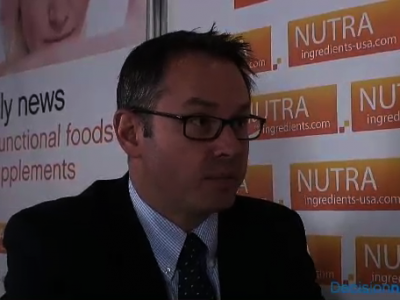Pea drink concept poised to take on soy
Soy beverages are commonly known to consumers as ‘soy milk’, although the term milk cannot officially be used to describe non-dairy products. The market has seen enormous growth in recent years, and market researcher Zenith predicted volumes of 1,900 litres and a market value of €5.35m by 2011.
But Roquette, which recently unveiled a new version of its pea protein ingredient Nutralys with an improved taste profile, expects pea-based products to swallow a slice of the soy market in the future.
Roquette has patented its new pea beverage concept, which it is calling a ‘vegetal booster’, and is now proposing the idea to the food industry. Details of the idea, which Emily Laewaert, marketing manager for Roquette’s nutrition business unit, emphasised is not being offered to consumers by Roquette, are being kept under wraps, but the development has been made possible by the new version of Nutralys.
Unlike soy, pea is not on the EU list of allergens, Laewaert told FoodNavigator.com at Vitafoods in Geneva last week, where the idea was launched. Moreover, soy isoflavones are rich in oestrogen, a female hormone, which might present some concerns for the parents of children with milk allergies as the long-term effects.
Roquette is based in Lestrem in northern France, in the heart of the pea-growing region. While soy products are dogged by GM issues, peas from France are GM-free.
Lauwaert said that when soy and pea with the same traceability, quality, and non-GM certification are compared, pea comes out cheaper.
New process
Roquette has been marketing its Nutralys pea protein since 2007, but it found its use was limited at high percentages because the taste was marred by green, vegetable-like notes.
It therefore embarked on a 2-year programme to improve the ingredient by first evaluating the volatile flavour compounds in pea protein isolates, then identifying which molecules are linked to green notes. Once it had quantified the presence of these, the next challenge was to find a way to avoid their formation or eliminate them.
Most importantly, it did not want to change the water-based extraction process and introduce solvent or chemical extraction, because this would impair the clean, sustainable image of the ingredient.
It started by looking at the supply, storage and handling of the pea raw materials.
“We saw clearly when pea not stored in good conditions, there is an impact on taste,” said global market development manager for pea protein products, last month. It also became clear that extraction of the protein should be carried out as soon as possible after grinding.
Next, it looked at ways to adjust all the parameters in the production process, such as increasing or decreasing the pH and temperature, changing the pump action or how it is put into the driers, and the time and temperature of drying.























